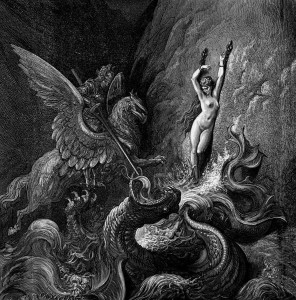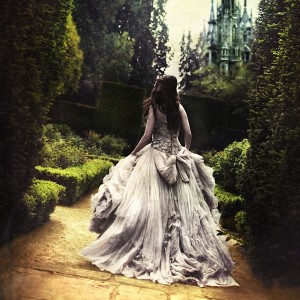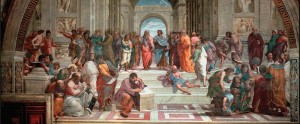 And next pursued, relating to her all
And next pursued, relating to her all
The frauds and magic of Atlantes hoar,
That wearing her fair face, who seemed the thrall
Of an ill giant, him had through the door
Of gold, enticed into the enchanted hall,
And after disappeared, the youth before;
And told how dames and cavaliers he cheats
Who thither make resort, with like deceits.
Orlando Furioso by Ludovico Ariosto
In terms of the fantasy genre, the contrast between the Middle-Ages and the Early Modern Period is pretty huge. While the Middle-Ages planted the seed of modern fantasy and is the most popular period in fantasy, the Early Modern Period didn’t add much to the mix of fantasy. And the contribution of literary works from that period towards fantasy were pretty limited. This is in contrast to the explosion of creativity and arts from the Early Modern period: works from Shakespeare, da Vinci, Michelangelo, Mozart and Beethoven to name a few. Still, the emergance of secular literature during that period is an important step in the making of the fantasy genre, as you will discover soon.
Let’s first lay down the historical background of this period.
The Early Modern Period starts with the Renaissance and ends with the start of the industrial revolution. It spans over a period of 300 years (1500-1800). The period saw the rise of reason, analysis and invidualism (enlightenment) and the lessening of influence of all faiths upon national governments. Science and technology developed at a rapid pace. Secularized civil politics, law courts and the nation state got established. Capital economies began to develop (earliest phase of globalization). Feudalism and serfdom disappeared. Regular contact between continents were established.
In terms of literature linked to the fantasy genre, chivalric romance carried on during the Renaissance. But generally there was very little “fantasy” written during the enlightenment time, only tales of witchcraft and ghost stories. However, the development of realistic genre ensured that fantasy could be defined, in contrast, as a distinct type.
Still, Ludovico Ariosto published in 1516 an Italian epic poem called Orlando Furioso. It features Christians and Saracens, soldiers and sorcerers, fantastic creatures like a giant sea monster called the Orc and a flying horse called the Hippogriff.  Also Charles Perrault laid the foundations for the fairy tale genre with tales like Cinderella, The Sleeping Beauty and Little Red Riding Hood in 1697. Madame d’Aulnoy coined the term fairy tales (contes de fées) that same year when she published From Fairy Tales.
Also Charles Perrault laid the foundations for the fairy tale genre with tales like Cinderella, The Sleeping Beauty and Little Red Riding Hood in 1697. Madame d’Aulnoy coined the term fairy tales (contes de fées) that same year when she published From Fairy Tales.
Also it is worth mentioning as a final note that a pretty common move of chivalric romance “fantasy” will be towards eerie gothic adventures (an example is Frankenstein) during the 19th century (covered in the next post).
In summary, the Early Modern Period didn’t see a lot of contributions to the fantasy genre. However, the settling of the realistic genre offered a base from which fantasy will later be able to distinguish itself from. This in contrast to earlier epic poems and stories that featured fantastic elements but were considered as a pretty realistic depiction of reality.
Now that we are done with this period, let’s move to the more exciting Long Nineteenth Century, in the following post.

Please share your comments